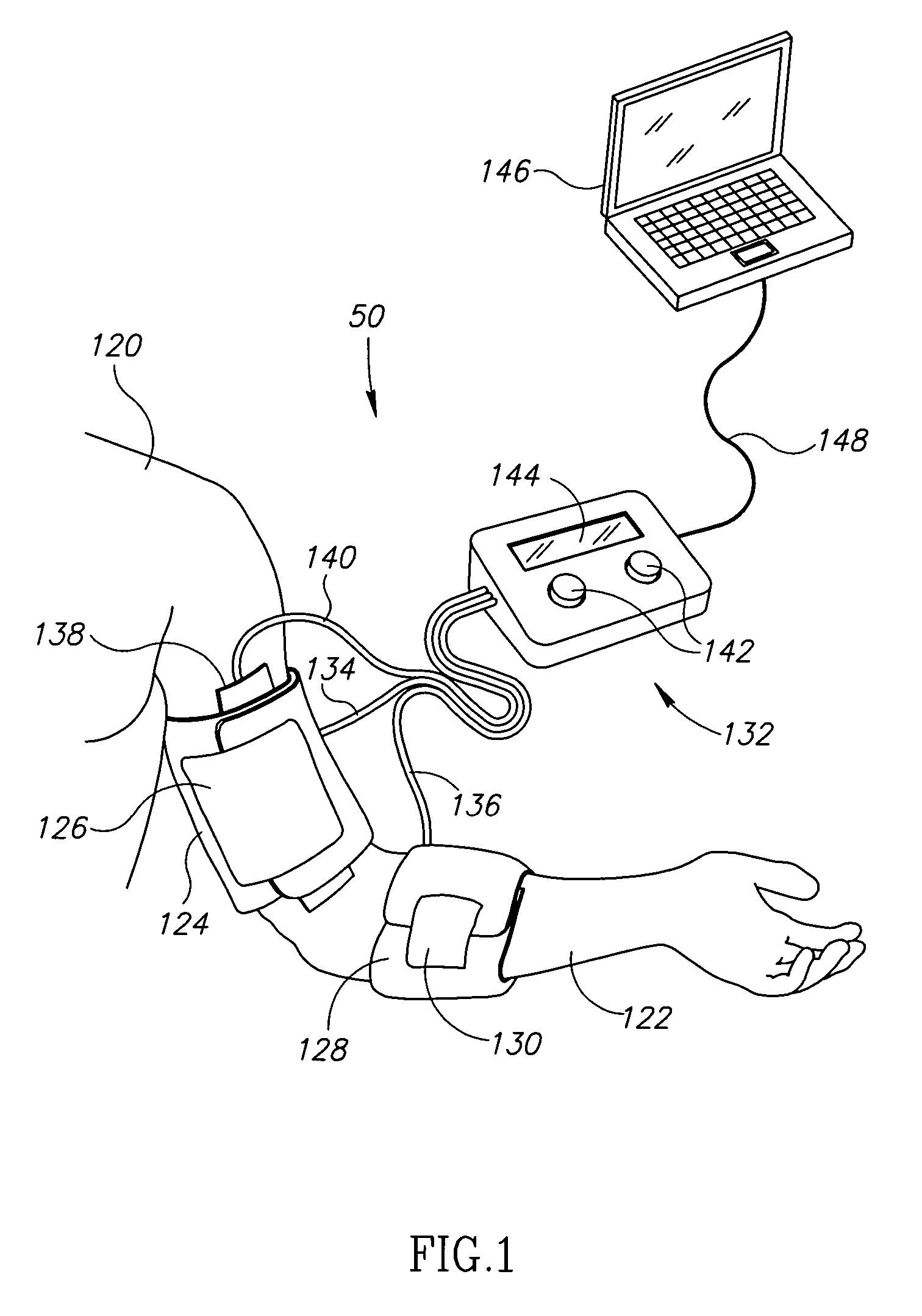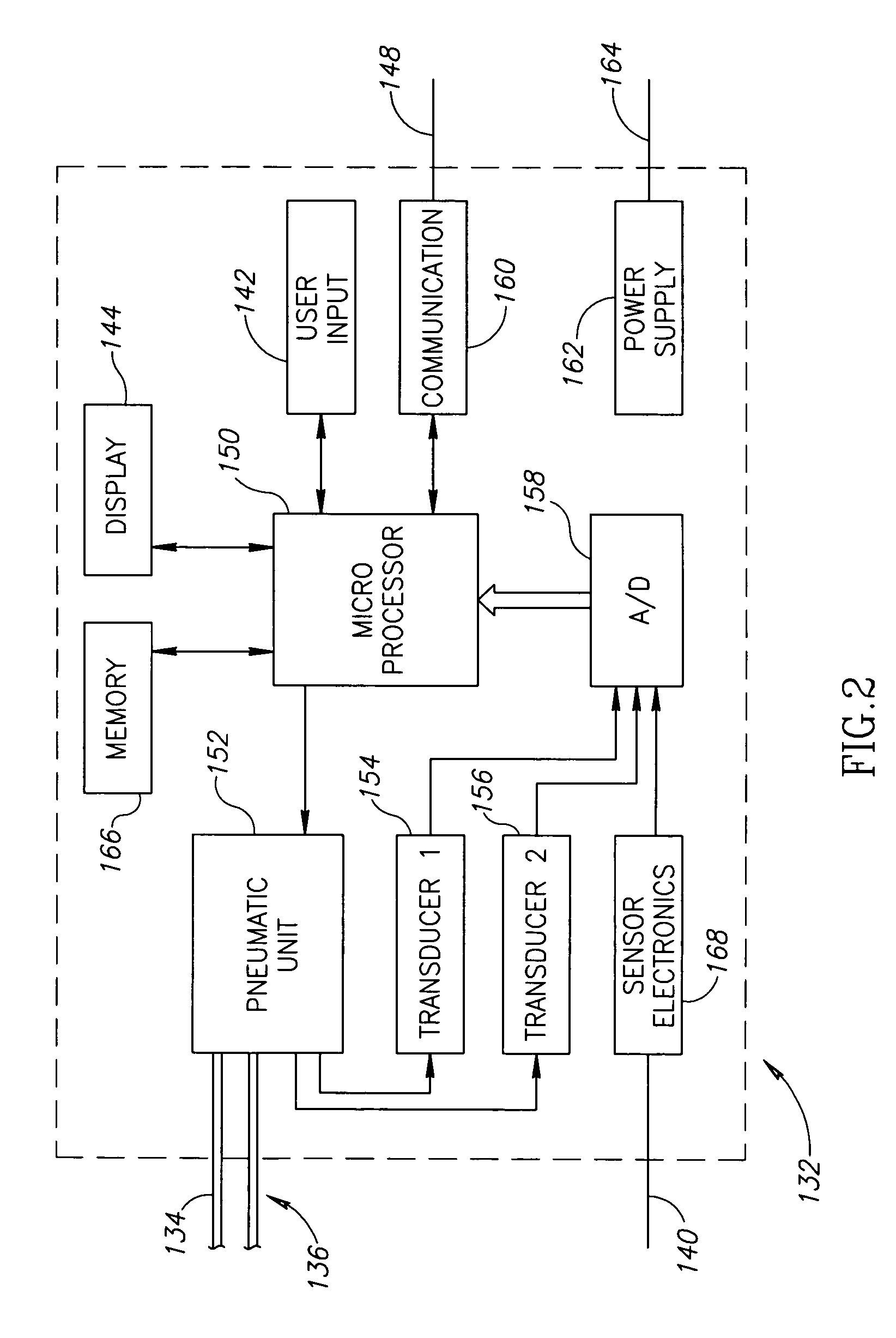Assessment of vascular dilatation
a technology of arterial dilatation and assessment, which is applied in the field of noninvasive assessment of arterial dilatation, can solve the problems of difficult implementation of test methods, hampered return blood flow through veins, and not widely used, and achieve the effect of fast measurement procedures
- Summary
- Abstract
- Description
- Claims
- Application Information
AI Technical Summary
Benefits of technology
Problems solved by technology
Method used
Image
Examples
Embodiment Construction
[0051]FIG. 1 is a schematic illustration of a system 50 for assessing endothelial dysfunction, in accordance with an exemplary embodiment of the invention. System 50 comprises a measurement cuff 124 which is adapted for mounting on an upper arm of a patient 120. Optionally, measurement cuff 124 is fastened to the upper arm by a strap 126. Alternatively, any other method is used to fasten measurement cuff 124 to the patient's arm. Measurement cuff 124 is used to apply a pressure required for measurement to the arm. In some embodiments of the invention, a bio-electrical sensor unit 138 is mounted on the upper arm within cuff 124, for measuring the cross-sectional area of the artery of the arm. Alternatively, as described below, measurement cuff 124 is used itself for measuring the artery cross-sectional area, as described below.
[0052] In some embodiments of the invention, system 50 includes an occlusion cuff 128 for inducing release of the vasorelaxing factor NO. In an exemplary embo...
PUM
 Login to View More
Login to View More Abstract
Description
Claims
Application Information
 Login to View More
Login to View More - R&D
- Intellectual Property
- Life Sciences
- Materials
- Tech Scout
- Unparalleled Data Quality
- Higher Quality Content
- 60% Fewer Hallucinations
Browse by: Latest US Patents, China's latest patents, Technical Efficacy Thesaurus, Application Domain, Technology Topic, Popular Technical Reports.
© 2025 PatSnap. All rights reserved.Legal|Privacy policy|Modern Slavery Act Transparency Statement|Sitemap|About US| Contact US: help@patsnap.com



